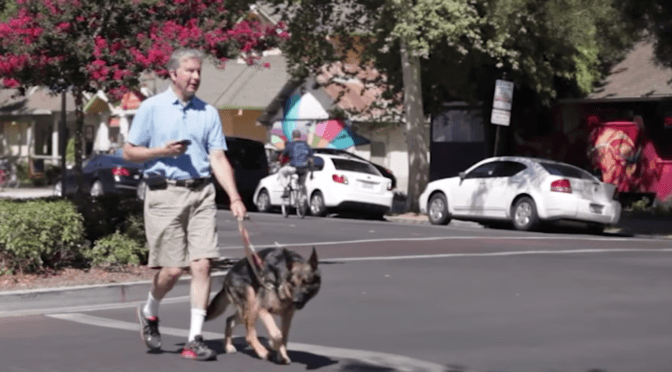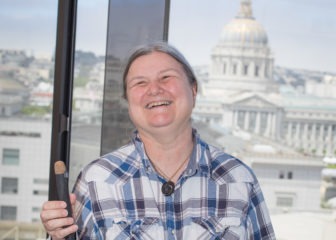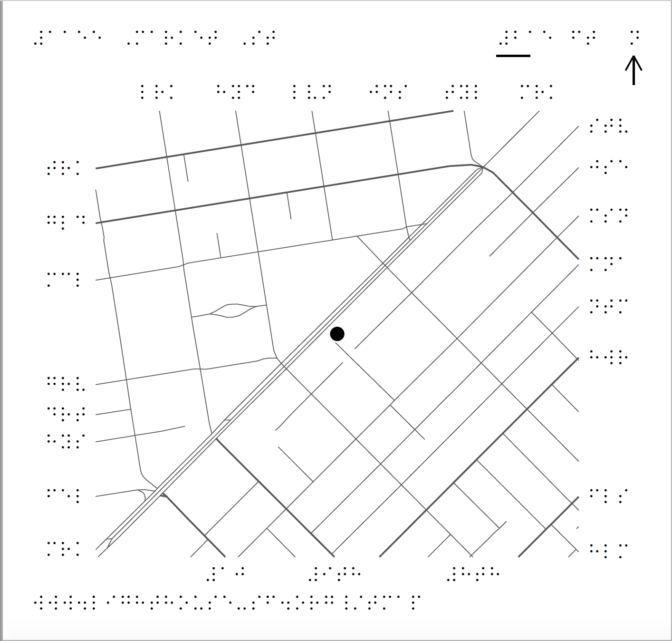In January, LightHouse started offering TMAP — on-demand tactile street maps — for order at our Adaptations Store (1-888-400-8933). We have been hearing some amazing stories about how our maps are being used, so we wanted to share them with our mapping community.
Mike May knows a bit about maps. He founded the company that launched the first accessible GPS, Sendero Group, and since 1999, Mike has introduced the world to a variety of talking map softwares, transforming and shaping the way blind people travel.
But despite his love for technology, if you step into Mike’s home or office, you’ll find the tables adorned with what may seem to be a vestige of the past: paper maps.
“The GPS is great in terms of volume, and numbers of points of interest and streets and all of that, but if you want to have a picture—a tactile, geographic way of understanding streets—then there’s nothing better than a tactile representation,” Mike says.
Mike’s a firm believer that hard-copy maps still meet a crucial need for non-visual learners that is currently not being met elsewhere.
The current iteration of TMAP differs from when he first encountered the beta version years ago in form and in scope, but he said that its application serves a critical, universal need: to orient by communicating a physical, material sense of space.
“The value of tactile maps is something that’s been around forever,” he says. “The ability to deliver those maps to people nationwide in a cost-effective manner is really the key.”
Mike has been blind since age 3, and has been involved with the LightHouse since age 7, when he went to camp at Enchanted Hills. In the 1980s, he was on the LightHouse board, and today lives in Wichita, Kansas where he serves as executive director of the Workforce Innovation Center at Envision.
When Mike moved to Wichita from the Bay Area earlier this year, he turned to the LightHouse’s made-to-order TMAPs.
“I needed to learn at least two things: one is my work location, and my home location,” he says. “I called up and I ordered maps for both spots, got a nice clean package, and now I have those available at my house. And I have the work ones available not only for me…we have lots of blind people, just like the LightHouse, that can take advantage of it here, so those maps sit in our reception area for anybody to browse.”
Mike said that he thinks the future of TMAP could include tech integration with the current physical form. As it exists now, he said that TMAP is both a unique and critical tool. “I think it’s a very undiscovered capability, and I applaud the LightHouse for making it available,” he says.
Get your TMAP today
To order a map, call our product specialists at 1-888-400-8933 and specify the street address of the map you’re interested in receiving. Within two business days we’ll ship you your map, or make it available for pick up at the Adaptations Store (1155 Market St., 10th Floor, San Francisco, CA).
What’s in the package?
- You will receive 3 map versions printed at simple, moderate and dense map scale ratios
- A tactile map key
- An introductory page
- All materials are printed on 11” X 11.5” sheets of embossed paper and include ink / large print labels in addition to braille
Learn more about the MAD Lab where these maps are produced.




